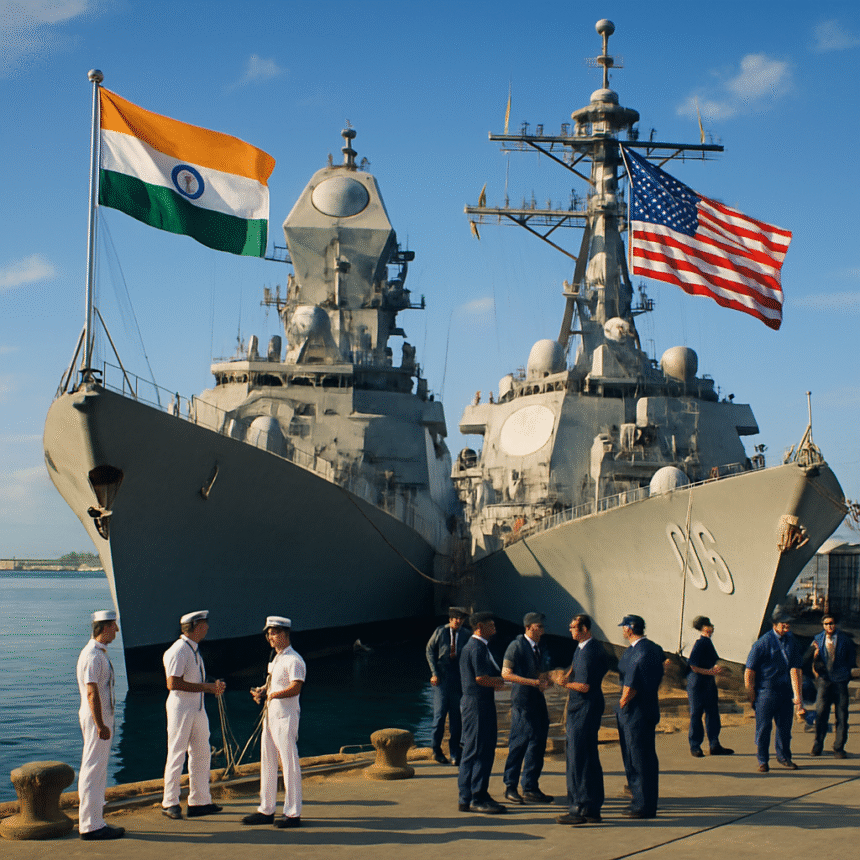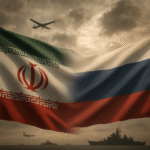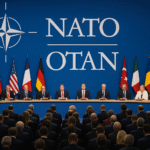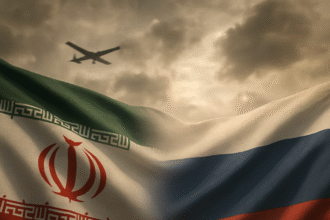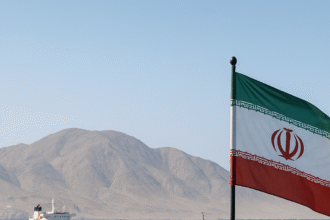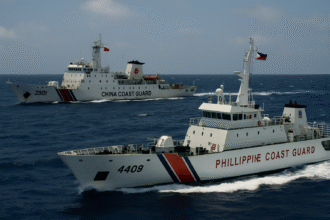A Strategic Milestone, Quietly Signed
In a development of quiet but considerable consequence, the United States and India have reinforced their bilateral defense cooperation through an expanded logistics pact — a move that enhances reciprocal access to each other’s military facilities and deepens operational alignment. While not as politically charged as high-profile summits or arms deals, this agreement is arguably more significant. It reflects growing strategic trust and cements India’s position as a central pillar in the U.S.-led Indo-Pacific security framework.
The updated pact builds upon the Logistics Exchange Memorandum of Agreement (LEMOA), signed in 2016, and includes more robust access rights for naval and air assets. Under the new arrangement, Indian vessels and aircraft will now be able to operate from key U.S. bases like Guam, Diego Garcia, and Pearl Harbor, while American forces will benefit from expanded access to Indian naval hubs in Kochi, Mumbai, and the Andaman and Nicobar Islands — a geographic asset of increasing strategic value.
“This is about more than fuel and supplies — it’s a platform for operational synergy,” said a retired Indian Navy admiral. “It reflects evolving trust and preparedness in the Indo-Pacific theatre.”
Why Logistics Access Matters
Logistics cooperation may appear mundane, but in military strategy, it’s fundamental. Modern operations depend not only on firepower, but on reach, sustainment, and endurance. The ability to refuel, restock, and recover at allied facilities can dramatically extend mission timelines and reduce response lags in crises.
For the United States, this pact strengthens the logistical backbone of its Indo-Pacific presence — particularly as China’s Anti-Access/Area Denial (A2/AD) capabilities threaten U.S. assets in the First Island Chain. For India, it represents a strategic leap: transitioning from a largely regional naval power to one with the infrastructure and partnerships needed for sustained blue-water operations.
“It’s about being able to operate, not just deploy,” noted a defense strategist at RAND Corporation. “India is positioning itself not only as a regional balancer, but as a security provider.”
Building the Architecture of Trust
This logistics pact joins a growing stack of foundational agreements signed over the past decade:
- LEMOA (2016) – Logistics sharing
- COMCASA (2018) – Secure communications
- BECA (2020) – Geospatial and satellite intelligence
Together, these pacts form the institutional scaffolding of a deepening partnership — one that doesn’t rely on the formal structures of alliances, but allows both countries to functionally operate as close security partners.
The agreements enable interoperability, allow for seamless information exchange, and open doors to joint planning. They also signal to other Indo-Pacific partners — including Japan, Australia, and ASEAN nations — that India is no longer hesitant to engage in structured, long-term security cooperation with the West.
“These are not just legal instruments,” said Tanvi Madan, Director of The India Project at Brookings. “They’re political statements — ones that show a significant convergence of threat perception.”
India’s Evolving Doctrine
India has historically maintained a strong commitment to strategic autonomy — a doctrine rooted in its non-aligned legacy and the geopolitical complexity of its neighborhood. For decades, New Delhi balanced partnerships with Washington and Moscow while carefully guarding its sovereign decision-making in foreign policy.
But recent regional developments — including China’s assertive behavior along the Line of Actual Control (LAC), its presence in the Indian Ocean, and its influence in South Asian countries like Sri Lanka and the Maldives — have recalibrated India’s threat perception. The 2020 Galwan Valley clash, in which Indian and Chinese soldiers fought hand-to-hand in a deadly encounter, marked a turning point in India’s security posture.
“The idea that India could remain equidistant between great powers is now obsolete,” said a senior Indian defense official. “This is a more transactional, more realistic era.”
The China Factor
China’s response to the logistics pact has been predictable. Beijing has framed the agreement as provocative and warned against the militarization of regional partnerships. Chinese state media has labeled India’s defense cooperation with the U.S. as part of a larger containment strategy.
Despite these criticisms, India has made it clear that its goal is not confrontation, but deterrence through balance. The partnership with the U.S. is not aimed at replacing China as a regional hegemon, but at creating enough strategic friction to prevent unilateral aggression — whether in the Himalayas or in the maritime domain.
Still, there is growing anxiety in Beijing over India’s expanding role in the Quad, its increased defense spending, and its naval outreach to Southeast Asia and Africa. The presence of Indian warships in the South China Sea — supported by American logistics — could shift Beijing’s calculus.
What This Means for the Region
The impact of this logistics pact will extend beyond India and the United States. For other regional players, it offers a potential model of flexible, issue-based alignment that doesn’t require binding alliances but offers meaningful security dividends.
- For Japan and Australia, it reinforces the Quad’s practical value.
- For ASEAN nations, it suggests that middle powers can work together to deter coercion.
- For Pakistan and Russia, it signals a continued decline in India’s defense dependence on Moscow.
Notably, it also sets the stage for multilateral maritime logistics, potentially involving joint use of bases among Quad members and beyond. In the longer term, this could lay the groundwork for a more coherent Indo-Pacific defense infrastructure — agile, decentralized, and responsive to asymmetric threats.
Looking Ahead: Industrial Ties and Tactical Depth
Beyond strategic logistics, the U.S. and India are also seeking to deepen cooperation in defense manufacturing and technology sharing. Co-development projects for jet engines, unmanned aerial systems, and electronic warfare platforms are already underway. The pact may enable more frequent and intensive joint exercises, such as Malabar and Tiger Triumph, with real-time logistical integration.
Both sides have also expressed interest in expanding space situational awareness, cybersecurity coordination, and AI-powered battlefield systems — areas that require shared digital infrastructure and trust built over time.
“We’re not just sharing ports anymore,” a Pentagon official remarked. “We’re building the operational muscle of a long-term security relationship.”
“This isn’t an alliance by name, but it is one in behavior,” said a senior South Block official. “And it is here to stay.”

